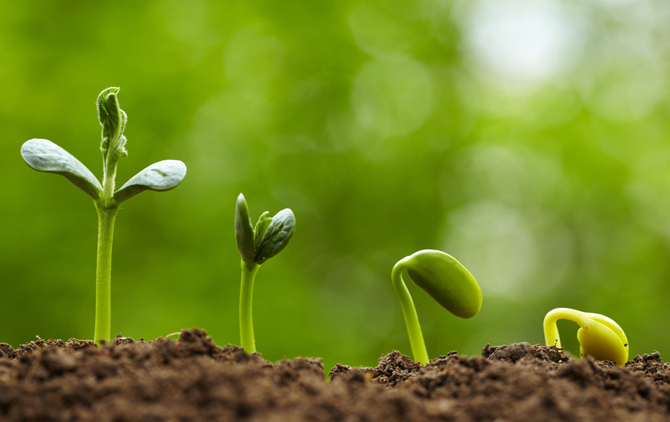3 Tips for Choosing Plants And Seeds

14 May, 2021
3 Tips for Choosing Plants And Seeds
How to choose them or how to avoid problems, consult this guide.
In a store or in catalogues that offer seeds online, you will find a huge variety of options.
Perhaps you are already planning your next visit to a nursery or store. Before you go, read these tips that will help you choose plants and seeds that will fill your grow flowers or delicious vegetables in your garden or farm.
1. Plan before buying your plants
Impulsive buying does not usually pay off when buying plants, so plan before setting off for a nursery.
Determine the space you have. This way you will know how many plants you need and of what size. Then, make a note of when and for how long the area where you plan to plant the plants gets sun. Remember that each plant is subject to different requirements for sun and light. As a rule, if the area where you want to plant faces east, the plants will receive sun in the morning and shade the rest of the day. If it is oriented to the west, your plants will receive the sun from noon to sunset. The south orientation, the sunniest, guarantees you 12 hours of sun a day, and the north orientation does not receive direct sun.
In the nursery, pay attention to where the plants you are thinking of buying are located and decide if your farm offers similar conditions.
Read the small label that comes with each plant, which will give you detailed information on how much it will grow, when it will flower, how much light it will need, and how often you will need to water it.
Understanding the environment that you can offer your plants guarantees their good growth.
2. How to choose the seeds of your favorite vegetables
If you like to grow vegetables and herbs and plant the seeds directly on your farm, this is undoubtedly the cheapest way and… the most satisfactory!
Choose quality seeds, preferably from plants native to the area where you live. Always look at the package to make sure it has not passed the expiration date that guarantees its freshness. In a store or on websites that offer seeds online, you will find a huge variety of options.
The so-called heirloom (the result of open pollination) are the seeds that have been passed from generation to generation and those that your parents and grandparents probably used. They usually produce natural and tasty fruits, and they have the advantage that you can replant them year after year.
Hybrid or F1 varieties (not to be confused with transgenic or genetically modified seeds) are the result of the combination of two different varieties. This combination is done manually to ensure better crops or to avoid certain pests. Hybrid seeds are somewhat more expensive (there are only a few in each package) and you will have to buy new ones each year. Make sure they have not been treated with chemicals (see what it says on the label untreated seeds).
3. What plants should you choose or avoid and how to detect problems
With so many options and varieties of plants in stores, how do we ensure that we choose plants that, in addition to being beautiful, remain fruitful?
Even if a plant full of flowers tempts you, it is much better to buy one with few open flowers but many buds still unopened. You will enjoy the flowers for much longer!
Carefully lift the plant out of the pot and take a look at the roots. If they accumulate in a large quantity and in a circular way at the base of the pot (sometimes even coming out through the holes in the pot), it is a sign that the plant has been in the nursery for a long time and it may have difficulties absorbing water and nutrients.
Learn to read the leaves because they tell the story of the plant. The yellowish, brown or spotted leaves are usually the results of excess water or deficiencies of different types of nutrients. Glossy green leaves often indicate good health.
Check for pests. You do not want to bring to your farm a plant infected with some type of pest that, in addition to preventing its growth, infects the rest of the plants on your farm. Look carefully at the leaves for the presence of any type of insect, especially on the back of the leaves, and do not buy plants whose leaves look yellow, blackish, blotchy, with small holes, or feel sticky to the touch.
